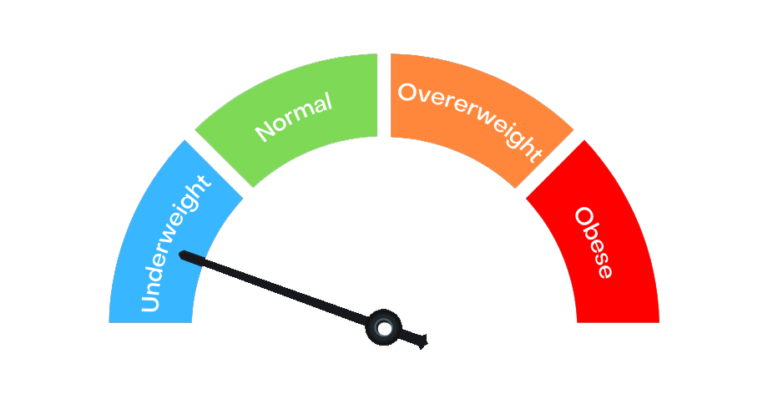
Akansha Mishra
Bariatric Dietician & Content Writer
Understanding - Fat Vs. Visceral Fat & (Why Visceral fat is dangerous)

In the realm of health and fitness, discussions about fat often center around its perceived negative impact on our bodies. However, not all fat is created equal. Understanding the distinction between fat and visceral fat is crucial for making informed decisions about our well-being. Now it’s time to explore the differences between fat and visceral fat, shedding light on their roles, implications for health, and strategies for maintaining a balanced lifestyle.
The Basics: What is Fat?
Fat, also known as adipose tissue, is a natural and essential component of the human body. It serves various functions, such as storing energy, regulating temperature, and acting as a protective cushion for organs. Fat is classified into two main types: subcutaneous fat and visceral fat.
Subcutaneous Fat: Beneath the Skin’s Surface- Subcutaneous fat is the fat that lies just beneath the skin. It’s the visible fat we can pinch and feel. While it contributes to the body’s energy reserves and provides insulation, its main role is aesthetic. Subcutaneous fat can vary among individuals, influencing body shape and composition.In moderation, subcutaneous fat is not inherently harmful and may even be considered a healthy component, contributing to the overall well-being of the body.
Visceral Fat: The Deeper, Internal Fat- Visceral fat, on the other hand, is the fat that surrounds internal organs within the abdominal cavity, including the liver, pancreas, and intestines. Unlike subcutaneous fat, visceral fat is not visible from the outside. Excessive amounts of visceral fat, often referred to as central obesity, can pose significant health risks.
Understanding Visceral Fat: Why It Matters
Health Implications- While some subcutaneous fat is considered normal and even protective, an excess of visceral fat is associated with a higher risk of various health conditions. This type of fat is metabolically active and releases substances that can contribute to inflammation and insulin resistance, leading to an increased risk of chronic diseases such as:
Type 2 Diabetes: Visceral fat has been linked to insulin resistance, a key factor in the development of type 2 diabetes.
Cardiovascular Disease: Elevated levels of visceral fat are associated with an increased risk of heart disease and other cardiovascular issues.
Certain Cancers: Studies have suggested a connection between visceral fat and an increased risk of certain cancers.
Liver Diseases: Excess visceral fat may contribute to non-alcoholic fatty liver disease (NAFLD).
Metabolic Syndrome- Visceral fat is a key player in the development of metabolic syndrome, a cluster of conditions that increase the risk of heart disease, stroke, and type 2 diabetes. Metabolic syndrome includes factors such as elevated blood pressure, high blood sugar, abnormal cholesterol levels, and excess abdominal fat.
Influence on Hormones- Visceral fat can disrupt hormonal balance by releasing adipokines, which are proteins that play a role in inflammation and insulin resistance. This hormonal disruption can further contribute to the development of metabolic disorders and other health issues.
Why excess visceral fat is bad for you
Here are several reasons why excess visceral fat is considered bad for your health:
Association with Chronic Diseases: Excessive visceral fat is strongly linked to an increased risk of chronic diseases. Conditions such as type 2 diabetes, cardiovascular disease, certain cancers, and liver diseases are more prevalent in individuals with high levels of visceral fat. The metabolic activity of this fat type contributes to insulin resistance and inflammation, both of which play pivotal roles in the development of these diseases.
Insulin Resistance: Visceral fat releases molecules called adipokines and cytokines, which interfere with the body’s insulin sensitivity. This disruption can lead to insulin resistance, a condition in which the body’s cells do not respond effectively to insulin, resulting in elevated blood sugar levels. Insulin resistance is a key factor in the development of type 2 diabetes.
Increased Risk of Type 2 Diabetes: Individuals with excess visceral fat are at a higher risk of developing type 2 diabetes. Insulin resistance, along with the inflammatory substances released by visceral fat, can lead to impaired glucose metabolism. This increases blood sugar levels and, over time, may result in the onset of type 2 diabetes.
Cardiovascular Implications: High levels of visceral fat are associated with unfavorable changes in lipid profiles and increased production of inflammatory substances. These factors contribute to the development of atherosclerosis, a condition characterized by the hardening and narrowing of the arteries. Atherosclerosis is a significant risk factor for heart attacks, strokes, and other cardiovascular events.
Inflammation and Systemic Effects: Visceral fat is a source of inflammatory substances, including cytokines and adipokines. Chronic inflammation is a known precursor to various health issues, ranging from cardiovascular diseases to autoimmune conditions. The systemic effects of inflammation can have far-reaching consequences, impacting organs and tissues throughout the body.
Impact on Hormones: Visceral fat can influence the hormonal balance in the body. The release of adipokines can disrupt the normal functioning of hormones related to appetite regulation, leading to an increased likelihood of overeating and weight gain. This hormonal imbalance can further contribute to the development of obesity-related conditions.
Liver Complications: Excess visceral fat is closely linked to non-alcoholic fatty liver disease (NAFLD). The liver processes substances released by visceral fat, and when overwhelmed, it can lead to the accumulation of fat within the liver cells. Over time, this can progress to more severe forms of liver disease, including cirrhosis.
Increased Cancer Risk: Research has indicated that excess visceral fat is associated with an elevated risk of certain cancers, including colorectal, breast, and pancreatic cancer. The inflammatory environment created by visceral fat, along with hormonal disturbances, may contribute to the initiation and progression of cancer cells.
Compromised Respiratory Function: Visceral fat can affect respiratory function by reducing lung capacity and increasing the risk of respiratory disorders such as sleep apnea. The accumulation of fat in the abdominal area can put pressure on the diaphragm and chest, making it more challenging to breathe.
Adverse Effects on Reproductive Health: For both men and women, excess visceral fat can adversely impact reproductive health. In women, it may lead to hormonal imbalances, irregular menstrual cycles, and fertility issues. In men, it has been associated with lower testosterone levels, affecting reproductive and sexual function.
Therefore, excess visceral fat goes beyond cosmetic concerns and presents a serious threat to overall health. Understanding the risks associated with visceral fat underscores the importance of adopting a healthy lifestyle, including regular exercise, a balanced diet, stress management, and weight control. Prioritizing these measures can help reduce visceral fat, mitigate associated health risks, and contribute to long-term well-being.





